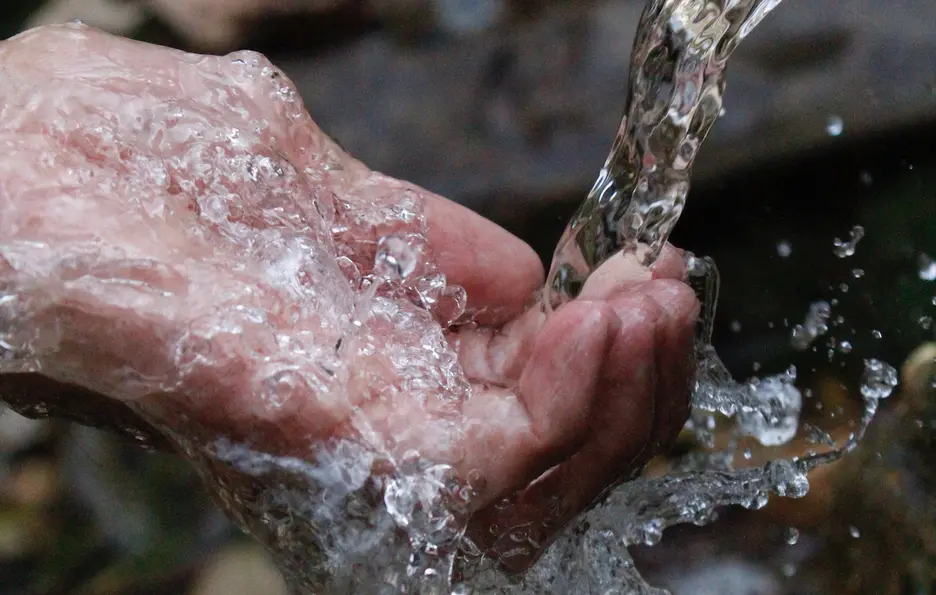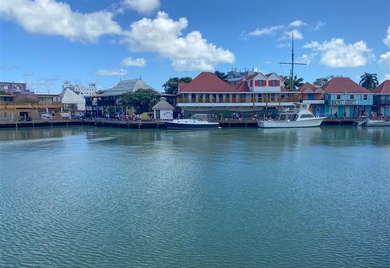Memories from The Future: How Latin America and the Caribbean Achieved the Sustainable Development Goals for Water and Sanitation

(Photo by Samar Deldar from Pexels)
Daydreaming at this year’s “Transformation and Change Management for Waste and Wastewater Utilities” workshop in Quito, I found myself projected in the future and looking backward over the decade of 2020-2030.
While in Quito, I spent some time with representatives from Latin American and Caribbean water management and sanitation companies, reviewing experiences in the implementation of AquaRating, an IDB Group-sponsored rating system for water and sanitation utilities. So far, the results tell a story of success with promising perspectives: AquaRating continues to improve management of water and sanitation service companies worldwide, while generating open knowledge mechanisms.
In May 2019, the United Nations’ Economic and Social Council released a report from the Secretary General assessing progress towards the Sustainable Development Goals (SDGs). For a third year in a row, Latin America and the Caribbean remain on the right track: “The global population using safely managed sanitation services increased from 28 per cent in 2000 to 43 per cent in 2015 and to 45 per cent in 2017”, the report reads, “with the greatest increases occurring in Latin America and the Caribbean, sub-Saharan Africa and East and South-East Asia”. Among other encouraging outcomes, the UN also states that, around the world, “the proportion of population using safely managed drinking water services increased from 61 to 71 per cent between 2000 and 2015 and remained unchanged in 2017.”
These are not minor endeavors. Our region is proving it’s capable of overcoming prevalent challenges such as corruption, mismanagement and a sense of government inaction to pursue the SGDs.
Fast-forward to 2030.
The course to achievement
In this projected scenario it was ten years ago, around 2020, when many still believed that many countries of Latin America and the Caribbean (LAC) wouldn’t meet their commitment to SDG 6, but our region made it and now, in 2030, it can be confirmed that LAC countries “ensure availability and sustainable management of water and sanitation for all.”
What happened, and how was this achieved? The information available starts in 2016, a year after the Sustainable Development Goals were set, and because this commitment was signed by all United Nations Member States, there has been and urgency to take matters seriously; remember, the end date is 2030.
After reviewing hits and misses, here’s four key takeaways on how Latin America and the Caribbean did it.
- There was no magic recipe
There was no single magic recipe, but rather a conjunction of efforts, the positive mobilization of all stakeholders and the development of a series of strategies.
The whole water cycle being directly affected by climate change, the urgency to implement a strong utilization of the resources was understood; but more than anything all stakeholders understood and played their respective roles; citizens, farmers, industrials, the public sector, and even the elected officials and politicians.
- Awareness led to strengthening
Awareness of the threats to the water systems led to a strong citizen’s engagement with a demand for solution and reduction in the water losses, this brought the discussion to a technical level with multi-partisan political support that went beyond the traditional dogmatic positions. It allowed for a strong Private Sector Involvement, and the development of Public Private Partnership models delivering services and value for money, with enhanced governance, regulation, transparency and control.
- Financing availability led to success
The IDB Group remained the largest multilateral development institution in the sector in Latin America, expanding its non-sovereign guaranteed loans to the sector, and helping to develop access to financial markets for the sector. The availability of finance came with an additional layer of oversight; the pensioners would invest in bonds from their local utilities–benefiting from the infrastructure and receiving dividends–but this financing had some (positive) strings attached, as the utilities had to strengthen their corporate governance and improve their transparency.
- Implementation of technologies led to efficiency
Widespread implementation of technologies from water collection, storage and abstraction to water distribution, from wastewater collection to treatment, reuse and final disposal, also helped improved the efficiency of the services, reducing the costs and optimizing the use of resources.
The sector entered a virtuous circle of being financially sustainable, with customers understanding the importance of the services and its associated costs, making sure those services were delivered with quality and efficiency.
* * *
Getting back to 2019, the required mobilization around SDG 6 remains essential if the region wants to reach its other Sustainable Development Goals commitments. Water and sanitation play a central role in human rights, poverty reduction, inequality elimination, peace and justice, and the environment.
After the Quito meeting was over, I remained convinced that the SDG 6 targets could be met and that most of the ingredients were already present; the results by the region in attaining the previous targets (the Millennium Development Goals) prove that Latin America and the Caribbean have an indisputable capacity to reach their goals.■
LIKE WHAT YOU JUST READ?
Subscribe to our mailing list to stay informed on the latest IDB Invest news, blog posts, upcoming events, and to learn more about specific areas of interest.
Subscribe



